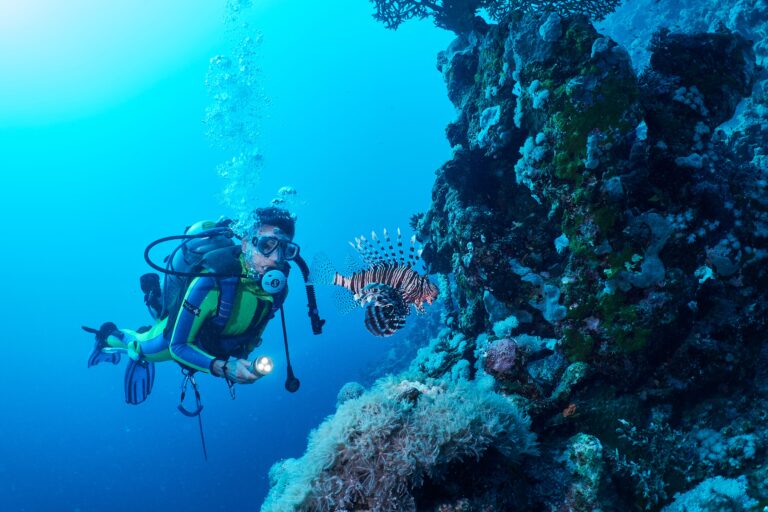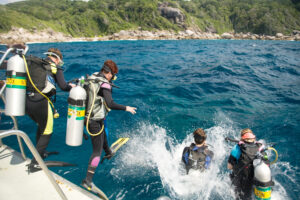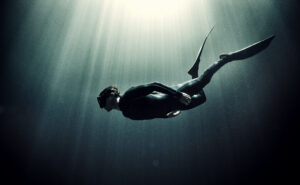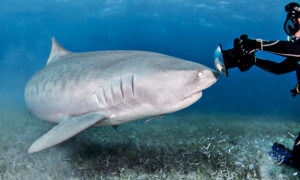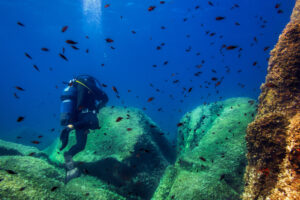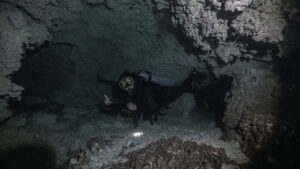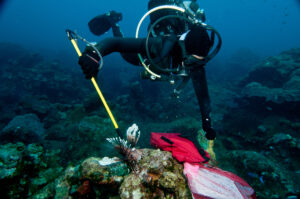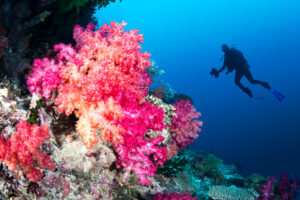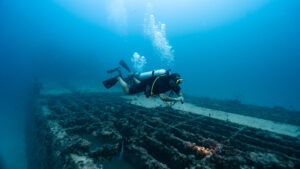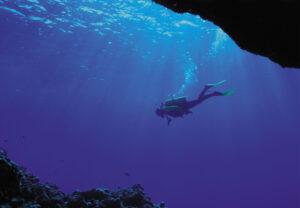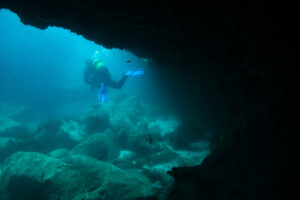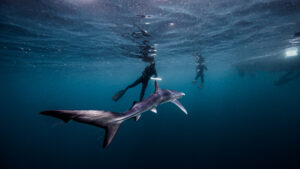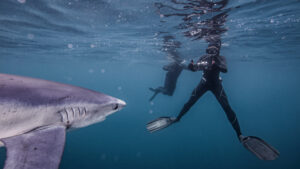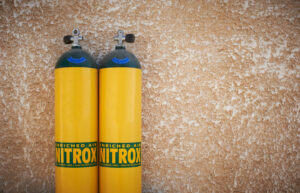What is Scuba Diving?
Scuba diving is a recreational and professional activity where individuals explore underwater environments using self-contained underwater breathing apparatus (SCUBA) equipment. This equipment allows divers to stay underwater for extended periods, enabling them to experience marine life, shipwrecks, caves, and other submerged wonders. The ability to explore these otherwise inaccessible areas has made scuba diving a popular pursuit for adventure enthusiasts, marine biologists, and professional divers alike. Since its modern development in the 20th century, scuba diving has attracted millions of people globally, offering a unique blend of excitement, discovery, and tranquility beneath the waves.
History
The concept of underwater exploration is ancient, with evidence suggesting that early civilizations developed basic methods to stay submerged. In ancient Greece, people used hollow reeds or animal bladders to enable breathing while submerged in water. Aristotle, the famed Greek philosopher, wrote about primitive diving techniques as early as the 4th century BC, highlighting the ingenuity of early humans in overcoming the challenges of underwater breathing.
Despite these early innovations, it wasn’t until the mid-20th century that modern scuba diving was truly born. In 1943, French naval officer Jacques-Yves Cousteau and engineer Emile Gagnan introduced the “aqualung.” This groundbreaking invention was the first self-contained device that provided a constant supply of compressed air to divers, allowing them to explore the underwater world with unprecedented freedom. The aqualung marked a pivotal moment in diving history, paving the way for both recreational and scientific diving. It transformed underwater exploration from a dangerous and limited endeavor into a popular and widely accessible activity.
Cousteau’s contributions, combined with advancements in diving technology, continued to shape the future of scuba diving. The sport’s popularity grew steadily during the latter half of the 20th century, with the development of safer, more efficient equipment and training methods. Today, scuba diving is an activity enjoyed by millions, supported by an industry dedicated to safety, education, and the conservation of underwater environments.
Equipment
Scuba diving requires specialized equipment to ensure the safety, comfort, and mobility of the diver underwater. Each piece plays a crucial role in allowing divers to breathe, see, and move through different aquatic environments. Understanding and properly using this equipment is fundamental for any diver, whether recreational or professional.
Scuba Tank
The scuba tank is one of the most essential components of diving equipment. It contains compressed air or a mixture of gases, such as Nitrox (a combination of nitrogen and oxygen) or Trimix (a mixture of oxygen, nitrogen, and helium), which the diver breathes underwater. Tanks are typically made of steel or aluminum and come in various sizes to accommodate different types of dives. For instance, larger tanks are often used for deep or technical dives, while smaller tanks are sufficient for recreational dives. The average tank holds about 12 liters of air, compressed to 200-300 bars of pressure, enabling a diver to spend a significant amount of time underwater depending on depth and air consumption.
Regulator
The regulator is another crucial piece of diving equipment, connecting directly to the scuba tank. It serves to reduce the high-pressure gas in the tank to ambient pressure, making it breathable. The regulator consists of two stages: the first stage lowers the pressure as the air exits the tank, while the second stage adjusts it to a breathable level as it reaches the diver’s mouth. Regulators are designed to deliver air on demand, meaning they only provide airflow when the diver inhales. A secondary regulator, known as the “octopus,” is also part of the system, serving as an emergency backup or to assist another diver in case of air supply issues.
Buoyancy Control Device (BCD)
The buoyancy control device (BCD) allows divers to regulate their buoyancy underwater, making it possible to ascend, descend, or hover at a particular depth. It is typically a vest worn by the diver that can be inflated or deflated by adding or releasing air from the attached scuba tank. Controlling buoyancy is essential for both safety and the overall diving experience, as it enables divers to avoid unintentional descents or ascents that could lead to injury. Maintaining neutral buoyancy is particularly important when diving near delicate ecosystems like coral reefs, as it helps avoid accidental contact with sensitive marine life.
Dive Mask and Snorkel
The dive mask allows the diver to see clearly underwater by creating an air space in front of the eyes. Without a mask, underwater vision would be blurred due to the refraction of light in water. Masks come in various designs, but all serve the primary function of improving underwater visibility. A snorkel, while often used on the surface, allows divers to breathe without using the air supply from their tank, conserving air for when it is needed underwater.
Fins
Fins are worn on the feet and help divers move efficiently through the water. Since water is much denser than air, fins provide the necessary thrust for swimming, allowing divers to cover more distance with less effort. Fins come in several types, including full-foot fins for warm-water diving and open-heel fins for use with boots in colder conditions.
Dive Computer
A dive computer is an essential safety tool for divers. It tracks depth, time spent underwater, and decompression limits, helping divers manage their dive profiles. Modern dive computers calculate crucial information in real-time, reducing the risk of decompression sickness and other dive-related injuries. They display this information in an easy-to-read format, allowing divers to adjust their dive plans based on real-time data.
Wetsuit or Drysuit
Wetsuits and drysuits provide thermal insulation, protecting divers from the cold temperatures found at various depths. Wetsuits are typically made of neoprene and work by trapping a thin layer of water between the diver’s skin and the suit, which the body heats, creating insulation. Drysuits, on the other hand, prevent any water from entering and are typically used in colder environments. The type of suit a diver wears depends on the water temperature and the nature of the dive.
Accessories
In addition to the core equipment, divers often use accessories to enhance their safety and experience. Dive lights are essential for night diving or exploring darker environments such as caves or wrecks. Underwater cameras and video equipment allow divers to capture their experiences and share them with others. Dive knives can be used in emergency situations, such as cutting entangled lines or ropes.
Training and Certification
Scuba diving is an activity that demands both technical knowledge and physical ability, requiring individuals to undergo specialized training and certification. This ensures that divers can safely navigate underwater environments and handle the challenges that arise during a dive. Diving courses typically involve classroom sessions, confined water training, and open water dives.
There are several internationally recognized certification agencies, including the Professional Association of Diving Instructors (PADI), Scuba Schools International (SSI), and the National Association of Underwater Instructors (NAUI). Each offers a range of courses, from beginner-level open water certifications to advanced certifications for specialties like wreck diving, deep diving, and rescue diving.
The basic entry-level certification is the Open Water Diver certification, which enables divers to dive independently with a buddy to a maximum depth of 18 meters (59 feet). This course covers essential skills such as underwater navigation, buoyancy control, and safety procedures. As divers progress, they can pursue additional certifications that allow for deeper dives, technical diving, or diving in specialized environments like caves or ice.
Dive Sites and Environments
Scuba divers have the opportunity to explore a wide range of underwater environments, each offering unique experiences. From the vibrant coral reefs of tropical waters to the mysterious wrecks of sunken ships, divers can immerse themselves in diverse ecosystems and historical landmarks.
Coral Reefs
Coral reefs are among the most popular diving destinations due to their stunning beauty and biodiversity. These ecosystems are home to thousands of marine species, including fish, crustaceans, and mollusks. Famous reef systems like the Great Barrier Reef in Australia and the coral reefs of the Caribbean draw divers from around the world. The clear waters and abundance of marine life make these locations ideal for both novice and experienced divers.
Wreck Diving
Wreck diving is a specialized form of diving where individuals explore sunken ships, aircraft, and other submerged structures. These wrecks are often rich in history, with some dating back hundreds of years. They also serve as artificial reefs, attracting a variety of marine life. Popular wreck diving sites include the SS Thistlegorm in the Red Sea and the USS Arizona in Pearl Harbor. Wreck dives can be shallow or deep, and some require advanced training due to confined spaces and potential hazards.
Cave Diving
Cave diving involves navigating through underwater cave systems, which presents unique challenges. It is considered a form of technical diving that requires additional training and equipment. Divers must be able to navigate narrow passages and manage their air supply carefully, as there are often no direct paths to the surface. Some of the most famous cave diving locations include the cenotes of Mexico’s Yucatán Peninsula and Florida’s underwater caves.
Safety and Environmental Considerations
Safety is a key aspect of scuba diving. Although the underwater environment can be hazardous, proper training and equipment can help minimize risks. One of the fundamental safety practices is the buddy system, where divers are paired with a partner to provide mutual support. Monitoring air consumption and adhering to dive plans, especially regarding decompression limits, are also critical for avoiding accidents like decompression sickness, also known as “the bends.”
Diving also comes with environmental responsibilities. Coral reefs, in particular, are delicate ecosystems that can be easily damaged by divers. Maintaining good buoyancy control helps divers avoid contact with the reef, preventing breakage or disruption. Divers are encouraged to respect marine life, avoid touching creatures, and refrain from collecting souvenirs from dive sites.
Marine Conservation and Citizen Science
Scuba diving provides a unique perspective on the health of marine ecosystems. Many divers participate in marine conservation efforts by contributing to citizen
science projects. Organizations such as Reef Check, Project AWARE, and CoralWatch engage divers in monitoring marine biodiversity, water quality, and coral reef health. Divers can collect data on species abundance, water temperatures, and pollution levels, which helps scientists study the impacts of climate change and human activity on underwater environments.
Citizen science programs not only contribute to valuable research but also foster a sense of environmental stewardship among divers. By participating in these initiatives, divers gain a deeper understanding of the importance of marine conservation and the steps they can take to protect these fragile ecosystems.
Underwater Photography and Videography
The underwater world offers breathtaking sights, many of which are captured through photography and videography. As technology has advanced, so has the ability to document underwater experiences. Modern underwater cameras are designed to withstand high pressure and provide high-definition imagery, allowing divers to capture the vibrant colors and dynamic scenes beneath the surface.
Underwater photography is a popular hobby among divers, but it also serves scientific and educational purposes. Photographs of marine species, coral reefs, and underwater landscapes contribute to research and help raise awareness about marine conservation issues. Videography, in particular, has played a significant role in popularizing scuba diving through documentaries and films that showcase the beauty and mystery of the oceans.
Key Takeaways
Scuba diving offers a gateway to the wonders of the underwater world. Through proper training, the use of specialized equipment, and a commitment to safety and environmental protection, divers can explore diverse ecosystems and contribute to the preservation of the planet’s oceans. Whether diving among coral reefs, exploring ancient shipwrecks, or capturing the underwater world on camera, scuba diving offers a unique and fulfilling experience.

